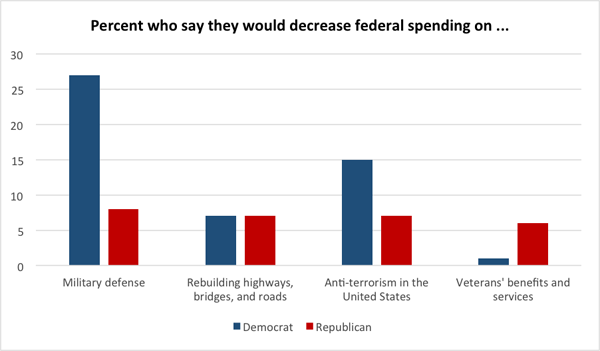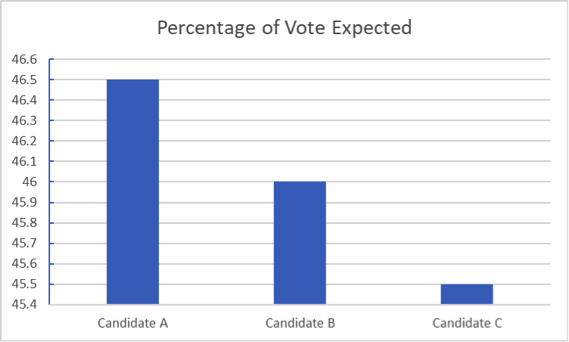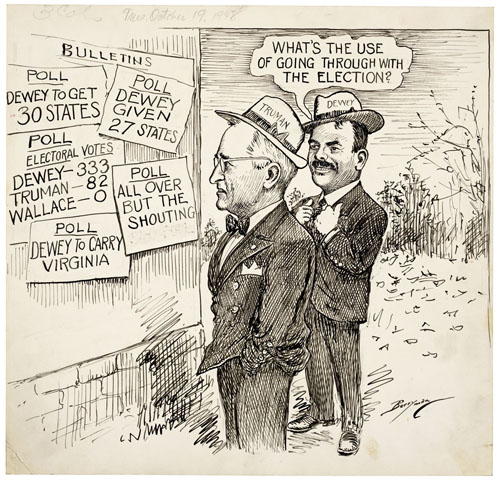Public Opinion Quiz - Module 4
1/9
There's no tags or description
Looks like no tags are added yet.
Name | Mastery | Learn | Test | Matching | Spaced |
|---|
No study sessions yet.
10 Terms
Which statement is an example of a national scientific poll? (5 points)
A sample of 100 people from a local church were selected and contacted by telephone. |
A sample of 100 people were randomly selected and surveyed when leaving a bank. |
A sample of 1,000 people from a local civic action group were surveyed by mail. |
A sample of 1,000 people was randomly selected and contacted by telephone. |
A same of 1,000 people were randomly selected and contacted by telephone.
Which of the following is an example of a closed-ended question? (5 points)
What is your opinion on the government use of taxpayer money to support programs like Social Security? |
How satisfied or dissatisfied are you with the progress Congress is making toward national gun legislation? |
Does the government spend too much, too little, or about the right amount of money on military programs? |
When do you think it is appropriate for the federal government to send food and other aid to foreign countries? |
Does the government spend too much, too little, or about the right amount of money on military programs?
Which of the following rows makes an accurate comparison? (5 points)
Push Polls | Exit Polls | |
|---|---|---|
(A) | Attempt to skew public opinion | Have sampling errors due to voter dishonesty |
(B) | Conducted as voters leave polling stations | Conducted over the telephone |
(C) | Compare changes in data over time | Frequent incidents of selection bias |
(D) | Random sampling | Convenience sampling |
(A) |
(B) |
(C) |
(D) |
A
In a public opinion poll of a representative sample of a population, 1,500 people were asked to agree with, disagree with, or express neutrality toward the following statements.
Statement A: The government should promote programs that support hiring equality.
Result: 80 percent of the respondents agreed.
Statement B: The government should promote affirmative action programs.
Result: 40 percent of the respondents agreed.
Which of the following most likely accounts for the different results? (5 points)
The questions were not open-ended. |
There were no minorities in the sample. |
The sample size was not large enough to be reliable. |
The questions contained a difference in wording. |
The questions contained a difference in wording.

Which of the following explains a possible limitation on this poll data? (5 points)
The sample size in this poll included less than 100 respondents. |
The samples in this poll did not include any minority groups. |
Programs in the graph are not inclusive of all federal spending. |
Respondents only received open-ended questions in the survey. |
Programs in the graph are not inclusive of all federal spending.

Which of the following explains how the presentation of this poll data affects its interpretation? (5 points)
The scale of the horizontal axis is skewed. |
The scale of the vertical axis is skewed. |
The labels of the graph are inaccurate. |
The title of the graph is inaccurate. |
The scale of the vertical axis is skewed.
A recent poll indicates that 56 percent of all people in the United States see the economy in a positive light. Which of the following supports the credibility of the poll result? (5 points)
The poll reported a sampling error. |
The respondents volunteered in an internet poll. |
The sample had less than 100 respondents. |
The poll utilized closed-ended questions. |
The poll reported a sampling error.

Which of the following is a possible consequence of the idea presented in the cartoon? (5 points)
Bandwagon effect |
Deliberative polling |
Selection bias |
Social desirability effect |
Bandwagon effect
When you answer the phone and agree to a poll, an interviewer asks if you would vote for Casey Candidate if you knew she supported legislation to restrict Second Amendment rights.
This scenario is an example of (5 points)
the bandwagon effect |
deliberative polling |
push polling |
selection bias |
push polling
A poll on a conservative website predicted that the Republican presidential candidate would defeat the Democratic candidate in the election next week.
This scenario is an example of (5 points)
the bandwagon effect |
deliberative polling |
push polling |
selection bias |
selection bias